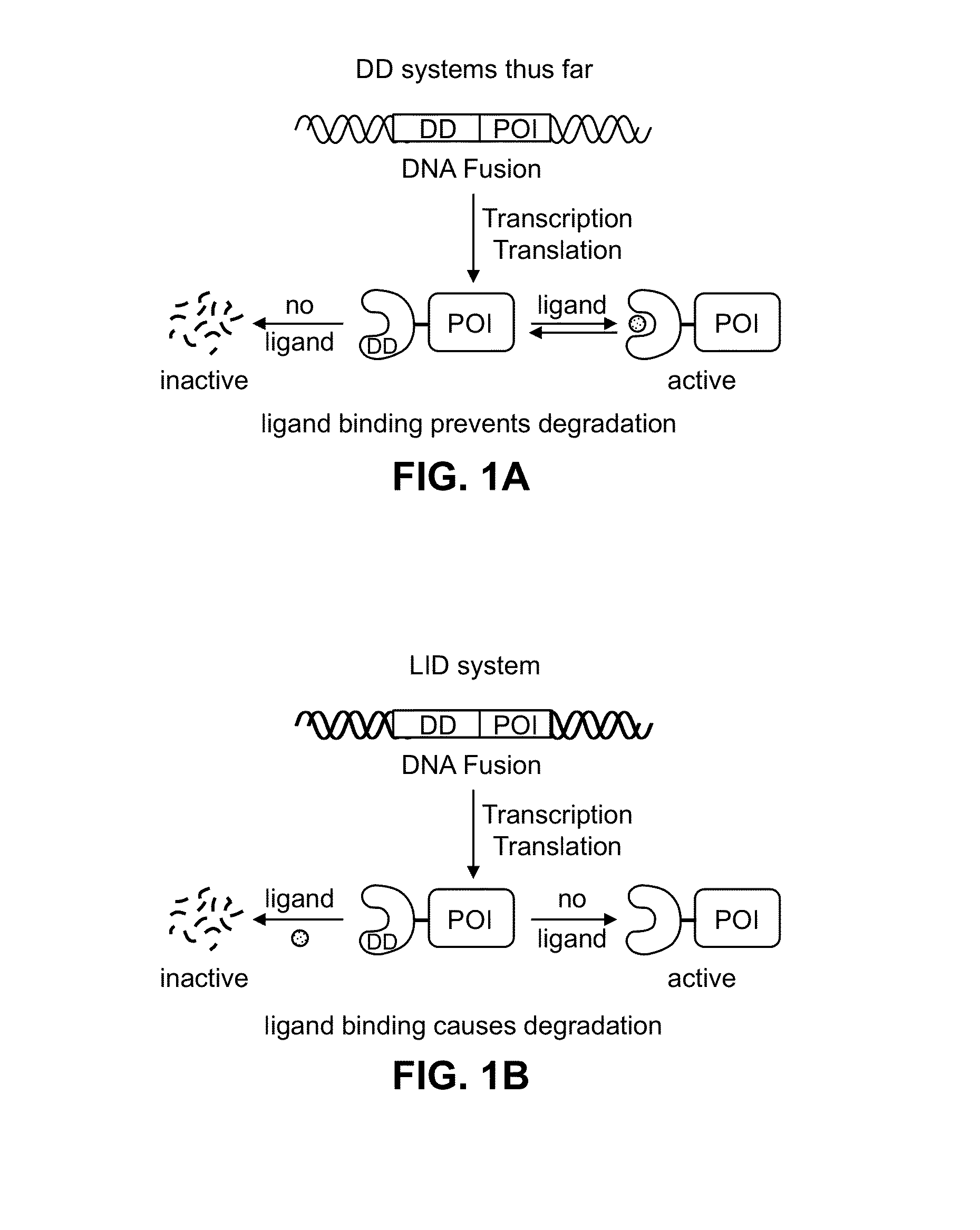Estrogen-receptor based ligand system for regulating protein stability
a ligand system and protein technology, applied in the direction of nuclear receptors, peptides, tissue culture, etc., can solve the problems of slow and irreversible methods, affecting the interpretation of the phenotype of transgenic or knock-out mice possessing null mutations, and affecting the ability of transgenic or knock-out mice to express null mutations
- Summary
- Abstract
- Description
- Claims
- Application Information
AI Technical Summary
Benefits of technology
Problems solved by technology
Method used
Image
Examples
example i
Ligand-Induced Destabilizing Domain
[0124]Human FKBP 2 protein was modified to include a 19-residue peptide extension at the C-terminus of the FKBP12 protein. Genetic diversity was engineered into this C-terminal extension using synthetic oligonucleotides and PCR, and this library of extended FKBP genes was fused to the 3′-end of the YFP gene. A library of plasmids was stably introduced into NIH3T3 cells using retrovirus, and FACS was used to screen the transduced cells for cells expressing YFP in the absence of the small molecule ligand Shield-1. When Shield-1 was added, YFP levels dropped significantly. Thus, upon addition of the small molecule ligand Shield-1, the Ligand-Induced Degradation (LID) domain and fusion protein with its N-terminal region were degraded by the proteosome machinery. Several rounds of screening, followed by single-cell-derived cloning revealed a single domain that displayed the desired behavior. This domain is identified herein by SEQ ID NO: 1.
[0125]While a...
PUM
| Property | Measurement | Unit |
|---|---|---|
| stability | aaaaa | aaaaa |
| nucleic acid sequence | aaaaa | aaaaa |
| nucleic acid | aaaaa | aaaaa |
Abstract
Description
Claims
Application Information
 Login to View More
Login to View More - R&D
- Intellectual Property
- Life Sciences
- Materials
- Tech Scout
- Unparalleled Data Quality
- Higher Quality Content
- 60% Fewer Hallucinations
Browse by: Latest US Patents, China's latest patents, Technical Efficacy Thesaurus, Application Domain, Technology Topic, Popular Technical Reports.
© 2025 PatSnap. All rights reserved.Legal|Privacy policy|Modern Slavery Act Transparency Statement|Sitemap|About US| Contact US: help@patsnap.com



